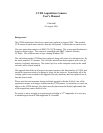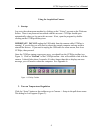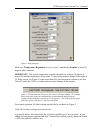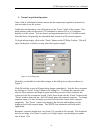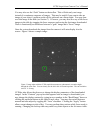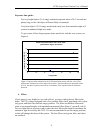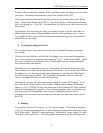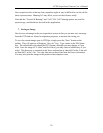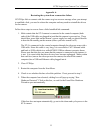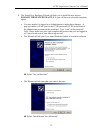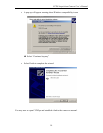
CCDS Acquisition Camera User’s Manual
8
Exposure time guide:
For very bright objects (V<8 mag), minimum exposure times of 0.12 seconds are
plenty long; in fact, the object will most likely be saturated.
Very faint objects (V>19 mag) are detected easily on a clear moonless night in 5
seconds in unbinned (high-res) mode.
To get a sense of how long exposure times need to be with the new system, see
Figure 6.
Measured performance with "clear" filter
(photometric night, new moon)
0
1
2
3
4
5
6
8 10 12 14 16 18 20
V magnitude
exposure time for S/N~50
Figure 6. Exposure time calculator for the CCDS acquisition camera with the “clear” filter.
Performance measured on a clear night with no moon. Note that objects are detectable with a
S/N~10: the above exposure times are an overestimate of the exposure time for minimum
detection.
4. Filters
If your target is very bright (or very red or blue), you may wish to place a filter in the
beam. The ST-9 comes equipped with a five-position filter wheel, populated with a clear,
red, green, and blue filter and one empty position. The filters are dichroic filters and
seem to correspond roughly with standard astronomical filter (blue≈V, green≈R, red≈I).
For very faint objects you may wish to place the clear filter in the beam to maximize the
amount of light received by the CCD. It is not recommended to use the empty position,
as this will change the focus of the system. The four filters (red, green, blue, and clear)
are confocal.



